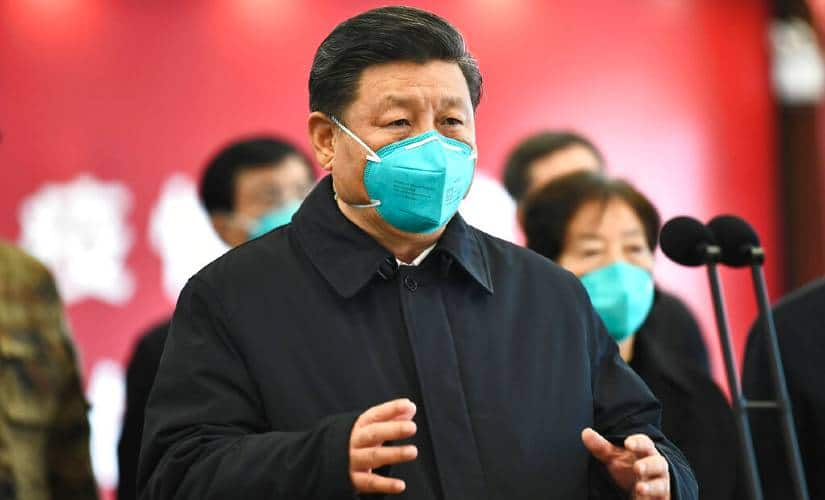On 11 December 1994, when the Kremlin launched an attack on Chechnya, a Russian official said that the rebellion would be defeated in 48 hours. However, it took the Russian Army five weeks and unprecedented violence, aerial bombardments and heavy tank attacks to seize the presidential palace on 21 January 1995. The conflict lasted two years and was followed by a second, even longer conflict in 1999. Grozny was razed to the ground, Chechnya was destroyed. A French newspaper concluded “Wars never go as planned.” One could also be tempted to draw a parallel between the Soviets’ defeat against the mujahideen in the 1980s and Ukraine. Former Secretary of State Madeleine Albright recently argued in The New York Times that a Russian occupation of Ukraine “would lead to an insurgency like that which the Soviet Union faced in Afghanistan in the 1980s”. While the world is watching the invasion of Ukraine by the Russian Army, one can always speculate about the future, but for India, more than ever, it is necessary to watch the great strategic changes taking place on its frontiers, particularly the borders with China, in order to be prepared for a future conflict. Confirming the existence of G216 The day Russian troops entered Ukraine, The Tibet Channel of the People’s Daily published a pictorial article with “magnificent pictures” about “the Great Beauty of Tibet: Winter in Ngari”. The article describes Ngari (or Ali for the Chinese), the Western-most prefecture of the Tibet Autonomous Region (TAR), which, located at an average altitude of more than 4,500m, faces the Indian states of Uttarakhand and Himachal Pradesh and the UT of Ladakh. The article depicts breathtaking sceneries, snow-capped mountains, vast grasslands, unpolluted lakes, with wildlife adding to the winter beauty of the area. Two small captions attracted my attention: “Tibetan antelope by National Highway 216 in Rutok (or Ritu for the Chinese) County of Ngari” and “Wild Yaks beside National Highway 216 in Rutok County”. The G216 highway is rarely mentioned in the Chinese media; it is one of China’s most secret projects; the new road will one day link the two restive regions of Xinjiang and Tibet and become an alternative for the G219 (or Aksai Chin) Road, which was built on Indian territory in the early 1950s. The opening of the G216 will be a critical strategic change for India. The Aksai Chin road It is necessary to have a look at history to understand the current developments. Soon after the PLA entered Lhasa in September 1951, the Chinese made plans to improve communications and built new roads on a war footing. One should not forget that in 1950, when eastern Tibet was invaded, a caravan took two months to reach Lhasa from the Chinese border. For Mao, the only way to ‘unify’ his Red Empire was to construct a large network of roads. The work began immediately with the arrival of the first young Chinese soldiers in Lhasa. Priority was given to motorable roads: The Chamdo-Lhasa, the Qinghai-Lhasa and the Tibet-Xinjiang Highway (Aksai Chin Road) in western Tibet; tens of thousands of Chinese workers died in the process. [caption id=“attachment_10460561” align=“alignnone” width=“640”]  Aksai Chin. Image courtesy Wikipedia Commons[/caption] For the first two roads, the surveys started at the end of 1951 and construction began in 1952 (they were completed in December 1954); the Aksai Chin road would follow soon after. The official report of the 1962 China war prepared by the Indian Ministry of Defence admitted that long before it was made public, the construction of the road cutting across Indian soil on the Aksai Chin plateau of Ladakh was known to the Indian Ministries of Defence and External Affairs. Different incidents should have awakened the Government of India from its soporific Hindi-Chini, Bhai Bhai fantasy. Instead of alarming the Indian government, these disturbing reports only reinforced Nehru’s determination to go for friendship with China. Early 1958, five months after the ‘official’ opening of the G219 highway, Subimal Dutt, the Indian Foreign Secretary, wrote to the Prime Minister: “There seemed little doubt that the newly constructed 1,200-kilometre road connecting Gartok in western Tibet with Yeh [Yecheng] in Sinkiang passes through Aksai Chin.” In an ‘informal’ note given by the foreign secretary to the Chinese Ambassador in Delhi on 18 October 1958, New Delhi finally decided to take some action: “The attention of the Government of India has recently been drawn to the fact that a motor road has been constructed by the Government of the People’s Republic of China across the eastern part of the Ladakh region of the Jammu Kashmir State, which is part of India.” The note went on to describe the Aksai Chin road and concluded: “It is a matter of surprise and regret that the Chinese government should have constructed a road through indisputably Indian territory without first obtaining the permission of the Government of India and without even informing the Government of India.” Indeed, it was ‘regrettable’. After China opens a new link between Tibet and Xinjiang, will Delhi find it again regrettable? The new road (G216) The G216 is an old dream of the Chinese leadership. In early 1951, Mao Zedong was desperate to link his two recently acquired provinces of Sinkiang (today Xinjiang) and Tibet. The country of the Uighurs had been annexed in December 1949, while western Tibet was invaded in November 1950; it was a matter of national priority to discover a route between Xinjiang and Tibet. The PLA decided to cross the massive Kunlun range along the Keryia Ancient Road in Hotan County, but on 27 May 1951, the Ashi Shan (mountain) volcano erupted on the route to Tibet; it began with a loud detonation, followed by the ejection of large blocks of lava, emitting thick black smoke, and lasted for a number of days. A large number of road workers were killed in the mishap, and the plan to build a road through the Keriya route had to be abandoned; Mao had no choice but to find an alternative. It is how the Aksai Road, today the G219 was built. But Chinese leaders never forget the dreams of their predecessors. Today, one of the most secret projects of President Xi Jinping is to open a new link between Xinjiang and Tibet. [caption id=“attachment_8271891” align=“alignnone” width=“825”]  Chinese president Xi Jinping. AP[/caption] According to the ‘National Highway Network Planning (2013-2030)’, the G216 will run from Hongshanzui Port (in Altay County, north of the Xinjiang Uyghur Autonomous Region), crossing Tibet through the Rutok, Gerze, Saga and Kyirong counties, ending at the Nepal border. The construction of the National Highway G216 has now started; it was confirmed by the innocuous caption. For India, the G216 will bring the greatest strategic change in the area since the 1950s. A bridge between Xinjiang and Tibet Last year, a Chinese website that mentioned the road, concluded: “The difficult passages between Tibet were used as a bridge for warfare and trade communication between the two major geographic regions [Xinjiang and Tibet] in ancient times. In modern times, they have become an important network for China to maintain the peaceful reunification of the western frontier. Tourists also deeply appreciate the vastness of China’s territory while moving on these routes.” For obvious reasons, Beijing does not want to announce as yet that it has started the construction of the highly strategic road link. For Beijing, it is also an important part of Xi Jinping’s Belt and Road Initiative (BRI) between Central and South Asia, and in case of a conflict with India, it will be a great boon for the PLA in the two restive autonomous regions bordering India, particularly for the Ladakh region, which has been witnessing a serious military confrontation since May 2020. One more mega project But there is more in Xi Jinping’s drawers, the original Xinjiang-Tibet G219 highway will be extended from both ends, from Yecheng to Northern Xinjiang and from Shigatse City in Tibet towards Kampa Dzong (north of Sikkim), Tsona, Lhuntse, Metok, Zhayul counties (north of Arunachal) and then towards Southern China; its length will be increased from 2,342 to more than 10,000 km; another dramatic strategic change. Old dreams of megalomaniac rulers cannot be dropped. While we are watching Ukraine, it is necessary not to forget the changes on India’s northern borders; the Dragon is certainly not sleeping. The writer is a noted author, journalist, historian, Tibetologist and China expert. The views expressed are personal. Read all the Latest News , Trending News , Cricket News , Bollywood News , India News and Entertainment News here. Follow us on Facebook, Twitter and Instagram.
For India, the G216 — a new road between Tibet and Xinjiang — will bring the greatest strategic change in the area since the 1950s
Advertisement
End of Article


)

)
)
)
)
)
)
)
)



